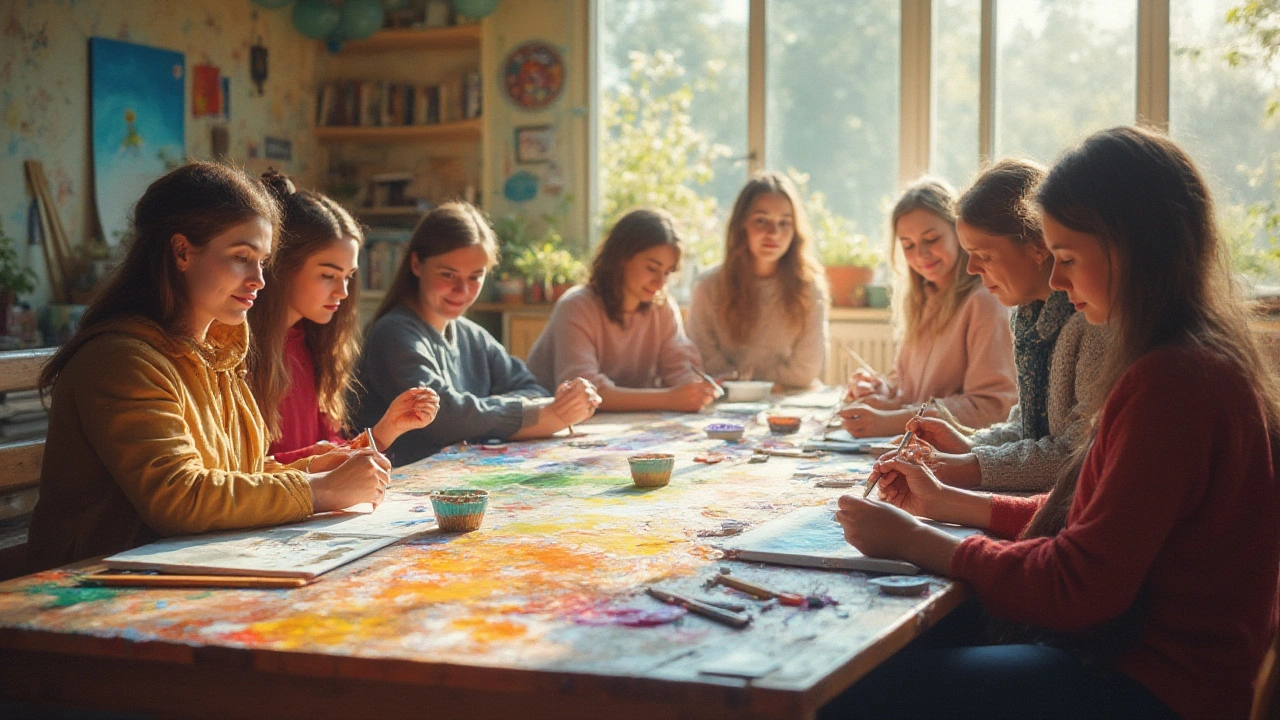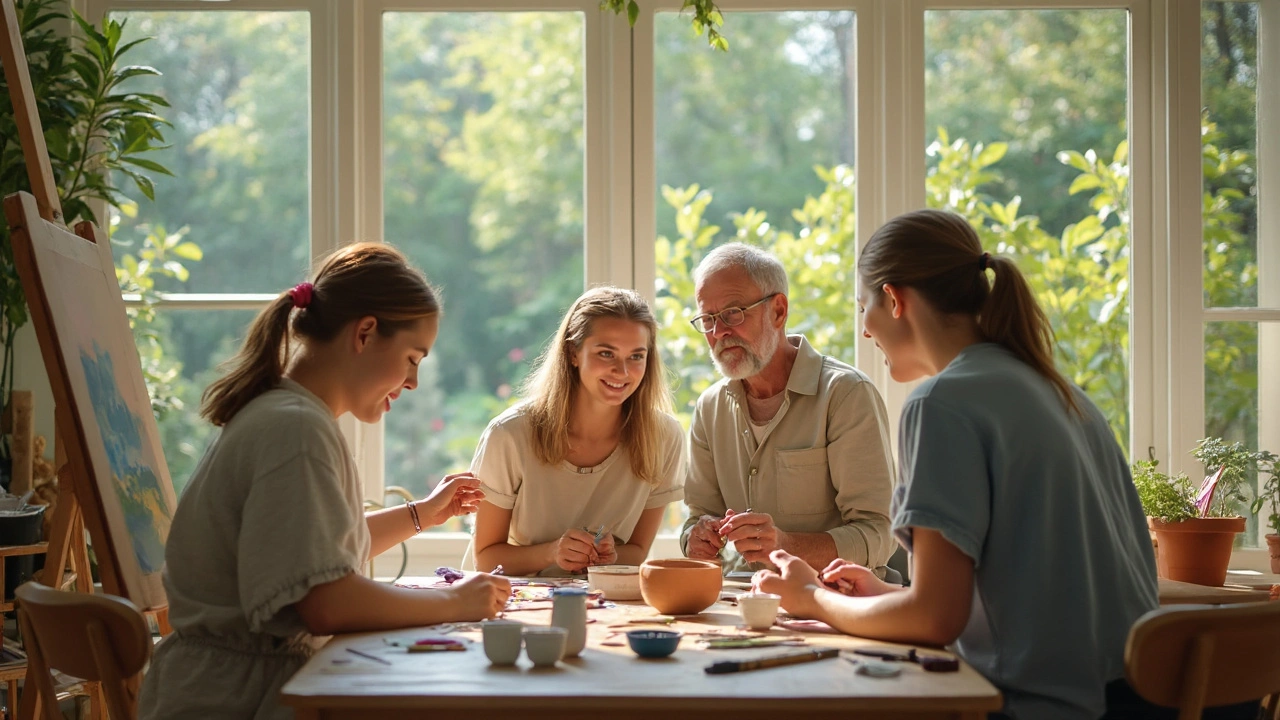Creative arts therapy uses art, music, movement, drama, and writing to help people feel better, solve problems, and grow.
It's not about being an artist; it's about using creativity to access feelings and change habits.
What happens in a session?
A trained therapist guides you through activities—drawing a tense moment, moving to music, acting out a scene, or free-writing a thought. The therapist helps you notice patterns and find small steps to cope. Sessions can be one-on-one, in groups, or part of rehabilitation teams.
Who can benefit? Kids who struggle to speak about feelings, teens dealing with anxiety, adults facing grief or burnout, and older adults with memory changes all use creative arts therapy. It works well when talk therapy stalls or when emotions feel too big for words.
Real benefits people report include reduced stress, clearer mood, better sleep, and more control over strong emotions. For example, stroke rehab programs often add music or art therapy to speed recovery of motor skills and motivation. Clinics use creative therapies alongside physical or occupational therapy to get better overall results.
Try simple art-based tools at home:
Set a 10-minute doodle timer when you feel stuck, paint one color that represents your mood, or write a short scene where you tell a problem to an imagined friend. With music, pick a song that matches your energy—slow it down if you need calm, or play an upbeat track to lift your mood and move for five minutes.
What to look for in a therapist: check for credentials like a master's in creative arts therapy, registration with a professional board, and experience with your issue. Ask how they measure progress, whether sessions are structured or open-ended, and what materials they use. A good therapist explains goals and keeps things safe.
Safety notes: creative work can surface strong emotions. If you have recent trauma or severe psychiatric symptoms, ask the therapist about their trauma-informed training. Always confirm confidentiality rules and the plan for heavy emotions that come up in a session.
Ideas for short group activities: shared collage for team building, rhythm circle to lower stress before a meeting, or a five-minute improv warm-up to boost creativity. These activities build trust and help people express ideas without pressure.
Combining creative arts therapy with mindfulness, biofeedback, or regular talk therapy often gives better outcomes. For instance, pairing art-making with breathing exercises helps the brain link calm states to creative skills.
If you want to explore, start with a single 30-60 minute session, try a free community workshop, or ask your doctor if creative therapy fits your treatment plan. It's an accessible way to work on feelings, recovery, and daily coping—without needing to be an artist.
Resources: look for local university clinics, community centers, or online directories like the American Art Therapy Association to find certified therapists. Many centers offer sliding-scale fees or group rates. Bring openness, a willingness to try the tools, and a small notebook to track changes between sessions. Surprise yourself with small wins.

Creative Arts Therapies: How Art Heals Body and Mind
Uncover how creative arts therapies help heal body and mind, manage stress, boost mood, and foster personal growth with practical tips and inspiring facts.
Read More
Creative Arts Therapies: Tackling Stress in Today’s World
Today's world is full of stressors, from work pressures to personal challenges. Creative Arts Therapies offer an innovative approach to tackling these stresses. Using art, music, dance, and drama, these therapies provide relief and a new perspective. They tap into creativity as a form of expression and healing. Let's explore how they can make a real difference in your life.
Read More
Trailblazers of Creative Arts Therapy: A Historical Perspective
Creative arts therapy has emerged as a transformative approach to healing, combining artistic expression with therapeutic processes. This article delves into the evolution of creative arts therapies, highlighting key figures who have pioneered the field. It explores how these therapies have developed over time and their impact on mental and emotional well-being. Readers will discover the unique ways art, music, dance, and other forms of creativity play a crucial role in healing.
Read More